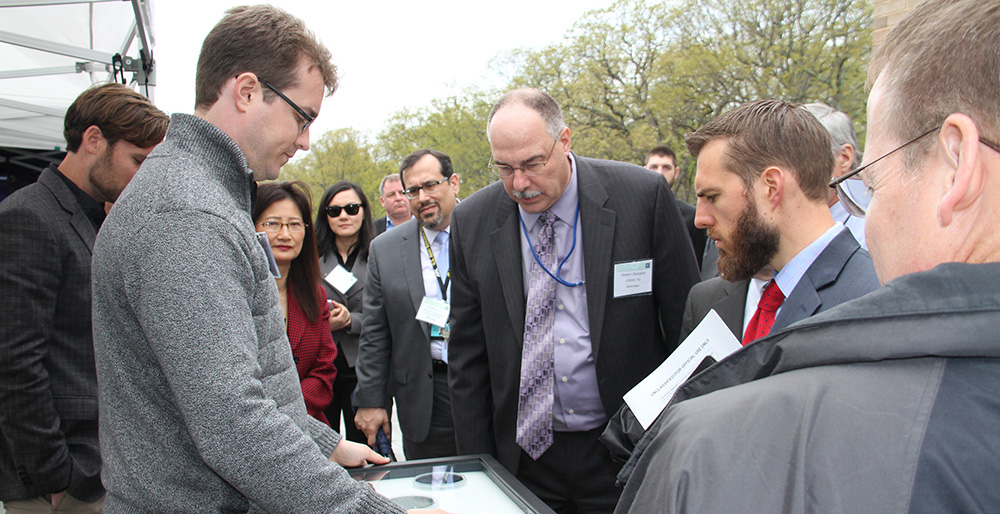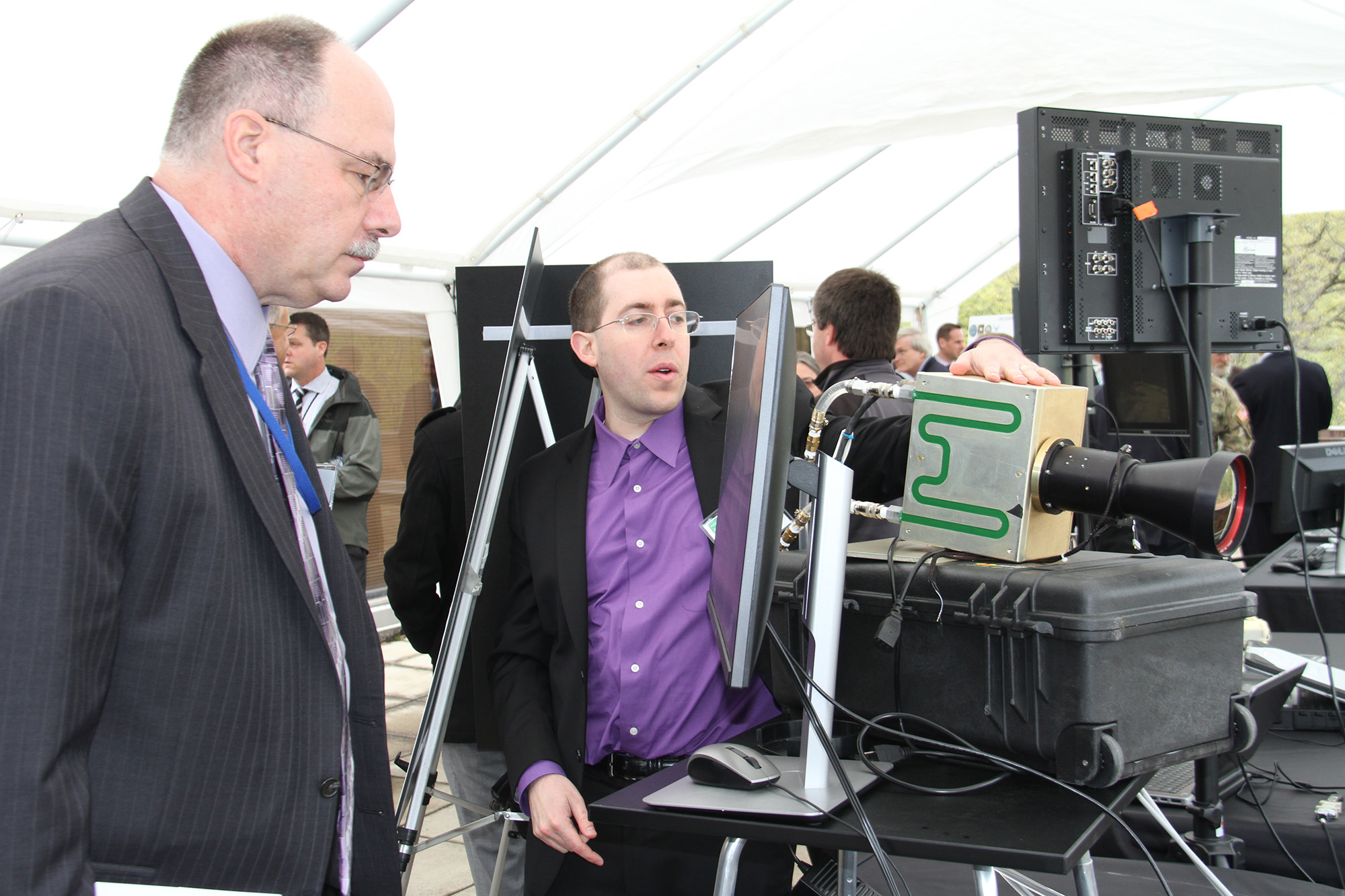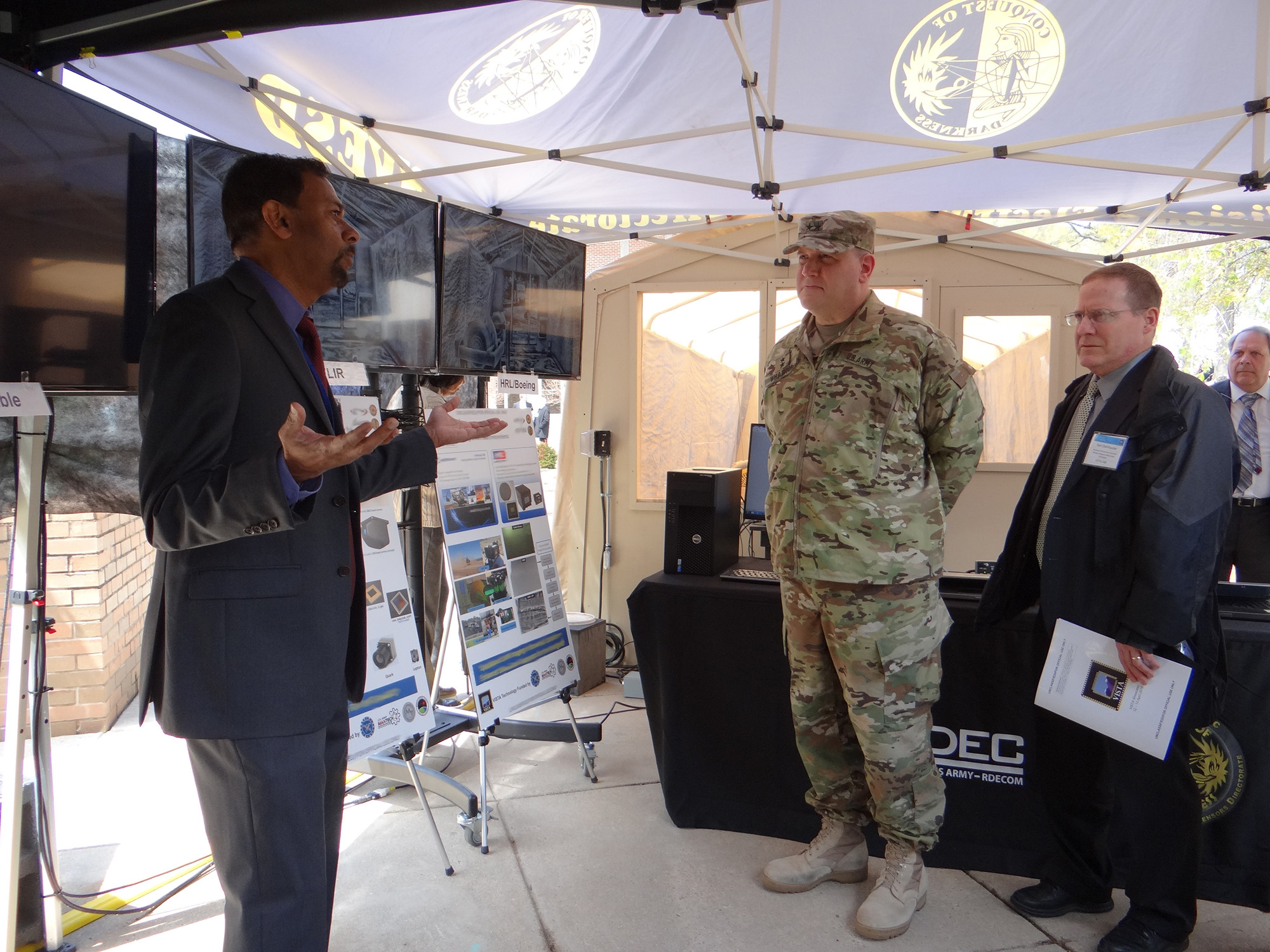
By Allison Barrow, CERDEC Public Affairs
FORT BELVOIR, Va. (April 19, 2016) — The Army held a showcase of infrared technology advancements resulting from a five-year collaborative program between industry and the Department of Defense, here, April 12-13.
The Vital Infrared Sensor Technology Acceleration, or VISTA, program was a tri-service program to regain the U.S. lead in advanced infrared sensor capabilities, which are the foundation for the Warfighter’s ability to track and sense targets on the battlefield. Infrared sensors are also used in pilotage, maneuver, and intelligence, surveillance and reconnaissance systems.
The U.S. Army Materiel Command’s Communications-Electronics Research, Development and Engineering Center, or CERDEC, managed the program through its Night Vision and Electronic Sensors Directorate, or NVESD, which researches and develops sensor and sensor-suite technologies to help Soldiers “own the environment.”
“Our goal is to make sure that our Soldiers, our joint Warfighters, and frankly, our nation, have decisive overmatch for any conflict,” said Maj. Gen. John F. Wharton, commanding general, U.S. Army Research, Development and Engineering Command, or RDECOM, during the opening of the showcase. “How do you turn things quickly? How do you take the existing equipment you have, the technology you have, and repurpose that into new capabilities?

Robert Zanzalari, CERDEC associate director, discusses the advanced capabilities provided by a camera with a demonstrator at the VISTA Showcase April 12. (Photo by Ms. Allison Barrow, CERDEC)
“And it’s not just the technology that we have. It’s turning the science, into the technology, into a capability, and then you have to use that technology into an operating concept.”
VISTA program partners, including industry and DOD, showcased more than 20 sensor technologies, such as infrared cameras and advanced focal plane arrays, which resulted from the program’s unique industry-government partnership.
“VISTA is a very ambitious program. It’s a program designed to really change the industrial base for infrared technology, to bring on a new infrared capability that is higher performance, lower cost, lower size, weight and power, more producible and will keep the United States’ advantage in infrared technology,” said Dr. Donald Reago, director, CERDEC NVESD. “It’s unprecedented cooperation between industry and various parts of the government, coming together to make this technology work quickly, get it online, and get it over to the user. That cooperation I think has been one of the real strengths of the program.”
The VISTA program used a model referred to as Horizontal Integration Using Trusted Entities, where industry worked together to identify and solve problems in infrared technology advancements. They worked directly with a government laboratory, their “trusted entity,” in order to develop and mature advancements quickly. Rather than competing, the organizations worked together toward producible solutions.

Maj. Gen. John F. Wharton, RDECOM commanding general, learns about the advantages of sensor systems enabled by the VISTA program during a discussion with Dr. Sumith Bandara, CERDEC NVESD Science and Technology Division, at the VISTA Showcase April 12. (Photo by Kay Stephens, CERDEC NVESD)
“When the Secretary talks about technology overmatch, manufacturing dominance underpins that technology overmatch. It does no good if our technology sits in a lab, if we can’t proliferate it to the hand of every Warfighter that sits out there in defense of our nation,” said Adele Ratcliff, director, DOD Manufacturing Technology Program, known as ManTech. “When we look at collaborative models, like VISTA, it really offers us a new opportunity in the environment that we live in today.”
Through the VISTA model, the affordability and production of the infrared capabilities were considered from the start of development. A VISTA Stakeholders Review Board, containing members from both industry and government, monitored the progress of the program to keep things on track.
“From up front they [the VISTA team] looked at not just the S&T work that had to happen, but also the manufacturing process, and working with the industrial base to help incentivize that industrial base to move forward with some of these capabilities that otherwise wouldn’t have happened,” said Andrew Davis, program manager, U.S. Army ManTech.
“Horizontal Integration with a trusted entity is the proper structure,” said Dr. Meimei Tidrow, VISTA Program Manager and Chief Scientist for Focal Plane Arrays at NVESD. “We have proved it. It’s not just on paper. It’s a reality.”
While the VISTA program is concluding, CERDEC and its partners remain committed to the continued development, maturation and transition of infrared sensor technologies to ensure that the combat overmatch achieved through VISTA is not lost, said Reago.








